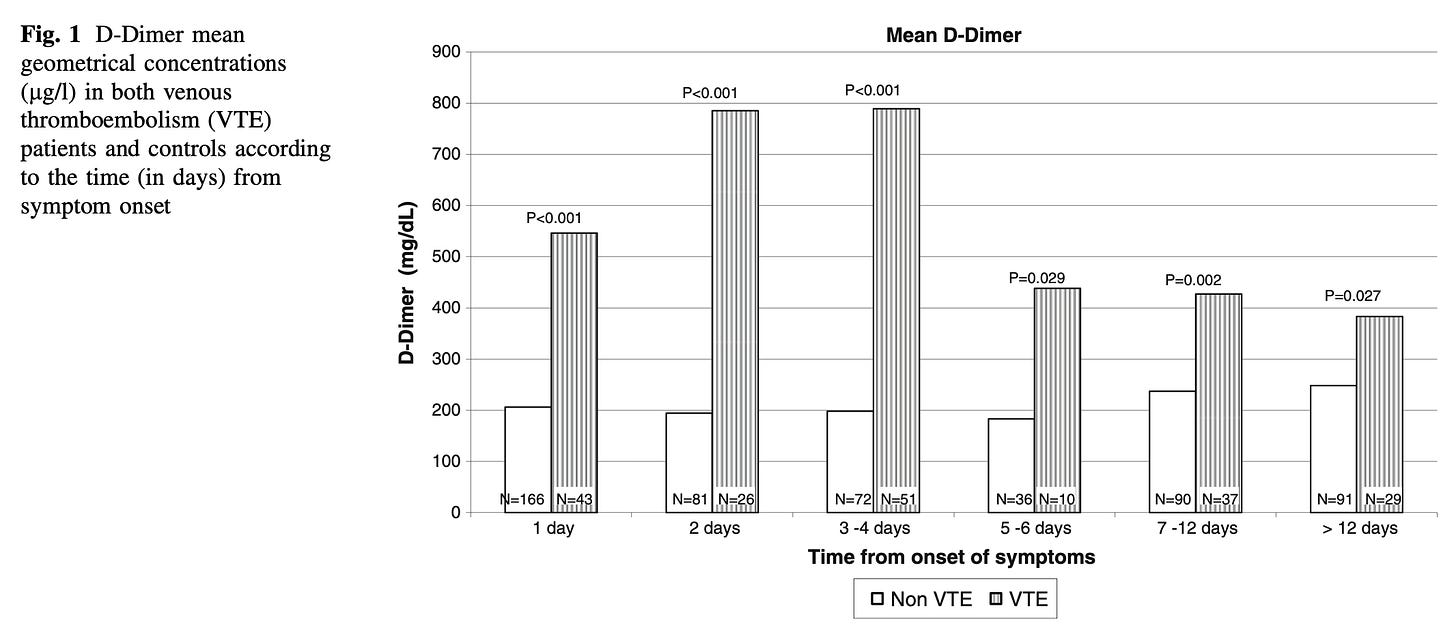Sensitivity Limitations of D-dimer Testing
Clots stabilize and false negatives increase after a few days.
I encountered a conversation regarding the limitations of D-dimer testing for the evaluation of pulmonary embolism, and one of the clinicians involved was unaware it is considered generally true D-dimer levels drop following symptom onset.
So, in case you missed it – from 13 years ago – here’s a sample of the literature describing the phenomenon:
As you can see from the Figure, patients diagnosed with a VTE had much higher D-dimer levels in the first couple days following symptom onset as compared to those evaluated after a week. Certainly, some patients will still have an elevated D-dimer in the extended timeframe, but with diminishing likelihood the D-dimer level will exceed your customary cut-off.
Older clots are simply more stable, with a reduced dynamic process of thrombosis/thrombolysis, and fewer shed fibrin split products (of which D-dimer is one).

